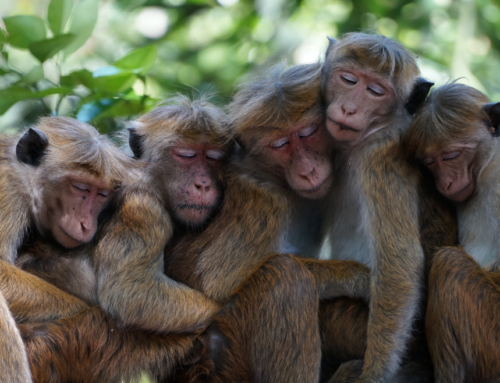Research Article: Karanth, K. U., & Sunquist, M. E. (1992). Population structure, density and biomass of large herbivores in the tropical forests of Nagarahole, India. Journal of Tropical Ecology, 8(1), 21–35.
Blog Author: Ishika Ramakrishna
Key Takeaways:
- In the early years of CWS’ foundation, we knew shockingly little about the large herbivores of India – from how many individuals reside in our forests, to their populations and sociality.
- This study established invaluable insights into the fundamental population ecology of nine herbivorous species, including seven ungulates and two primates in Nagarahole Tiger Reserve from Karnataka state in southern India.
- This work set the stage for several decades of research since the 1980s, and also took the first step towards informing wildlife managers about the conservation of these animals whose lives impact various aspects of India’s ecosystems and biodiversity.
When the Centre for Wildlife Studies was founded, now nearly four decades ago, we knew very little about the wildlife in our forests. The field of wildlife biology in India began to develop around this time as well. Pioneering ecologists tapped into the growing literature on field methods and scientific advances from other parts of the world to find ways of building upon the ecological knowledge emerging from India. In 1986, Dr Ullas Karanth and Dr Melvin Sunquist put their minds and expertise together to better understand and generate baseline information about one of the most important groups of mammals in India – large herbivores.
It was during this era of field-based research that the importance of large herbivores in an ecosystem was recognised, as they shape the landscapes they occupy and form a crucial component of the web of biodiversity within the country’s wild spaces. However, it was challenging to conserve these species owing to our lack of knowledge about fundamental aspects of their ecology, including population estimates and habitat needs. Filling these gaps in our understanding would help us protect these species that directly affect forest structure and, consequently, several other animals across various habitat types.
In their study, Dr Karanth and Dr Sunquist set out to observe seven ungulates and two primates in southern India’s Nagarahole Tiger Reserve – an important stretch of tropical forest from the Western Ghats. This included the muntjac, chital, sambar, four-horned antelope, gaur, wild pig and elephant among the ungulates, and the bonnet macaque and hanuman langur primates. Using a survey technique known as ‘line transects’, researchers walked a total of 463 km through different habitats of Nagarahole in search of these nine species to observe the number of individuals they came across, the sizes of the groups they were found in, and to know more about their age and sex ratios. Within their study area of 104 km2 they found three major kinds of habitats: dry deciduous forests, moist deciduous forests and teak dominant forests, which are present even today. The authors then examined and compared each species’ populations across these habitat types, as their distribution and the ability to sight them varied based on the kind of landscape they were in. At a time when we knew about these fascinating animals sparingly, obtaining these counts and characteristics for the first time was exciting and invaluable!
Having estimated the densities of these species across Nagarahole’s habitat types, the authors learned more about group-living among these animals. They found that most ungulate herds tend to have more females than males. They also found that nearly a third of the ungulate population was made up of young ones, informing us of high rates of reproduction. The muntjacs, sambars and four-horned antelopes were also seen to be relatively solitary creatures, unlike the others who would typically be present in large numbers. Amazingly, after collating all of the information from their sightings between 1986-1987, they found that their study area held a total herbivore biomass density of 14, 744 kg km2!
This study proved to be a crucial step towards understanding the ecology of an entire landscape through the lives of its resident herbivores. It also opened up the doors to several decades of research since, particularly with respect to dietary and habitat needs of these species. It also allowed wildlife managers to know more about how to improve habitats to support as much biodiversity as possible, allowing other species who are dependent on herbivores to thrive as well. These formative steps have laid the foundation for present-day conservation interventions, helping chital, sambar, langurs and more to flourish and keep our forests healthy.
Key words: biomass, density, herbivores, India, line transect, mammals, population structure, primates, tropical forests, ungulates.
You can access the original article here.






